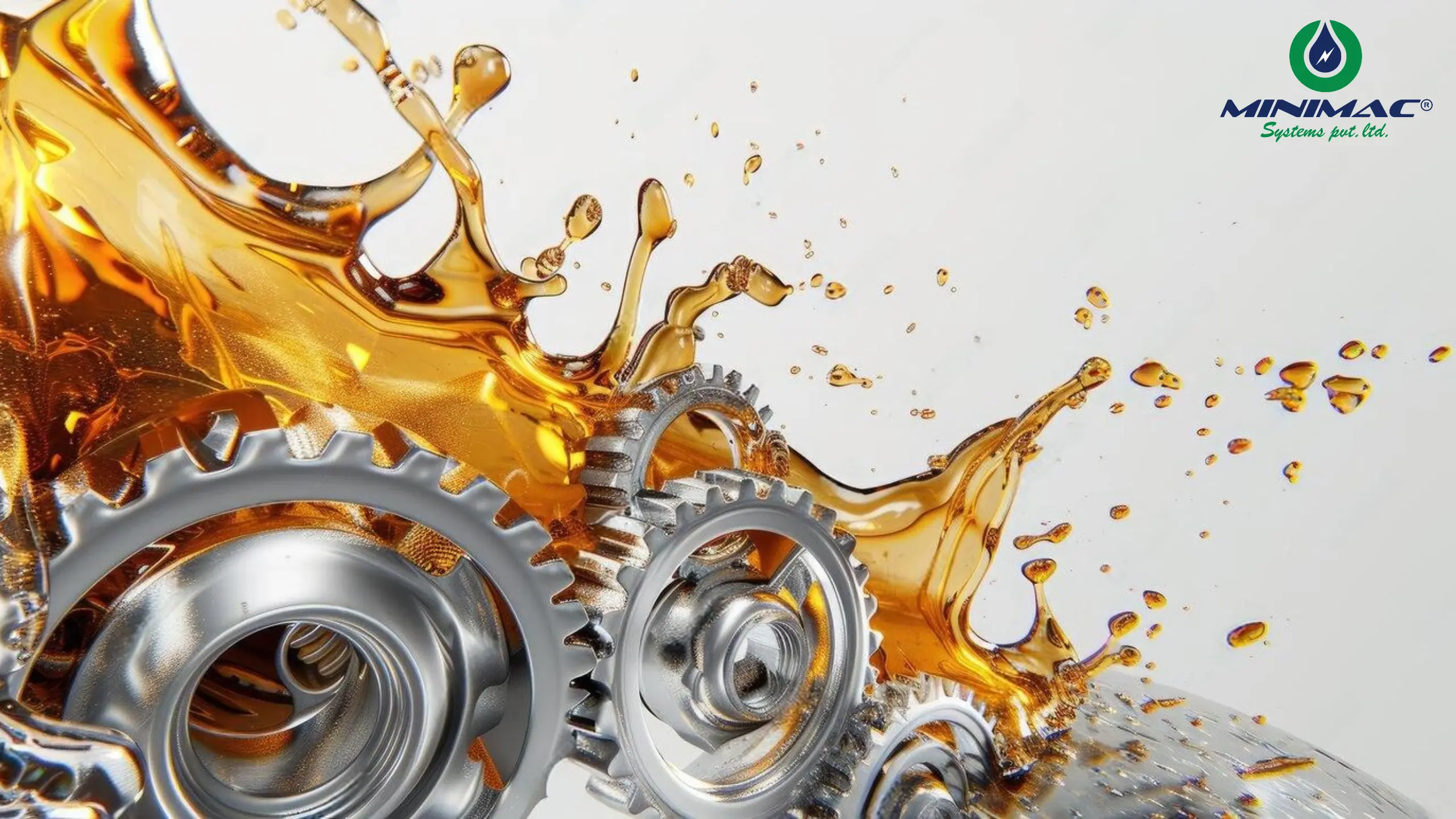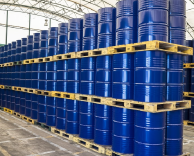Comprehensive Guide to Gear Oil: Applications, Maintenance, and Filtration
Introduction
Gear Oil_n; Gear oil is a type of oil used for lubrication of gear systems, the most common type of oil needed in machines to smoothly operate, avoid parts from being worn, and avoid possible damage. In this piece, we take a look at what gear oil is, the different types of gear oil, and how to maintain them, along with the solutions provided by Minimac Systems in gear oil Filtration.

What is Gear Oil?
Gear oil is a specialized high-viscosity lubricant used specifically for transmissions, gearboxes, differentials, and other devices. Here are its main functions:
- Minimizing friction and abrasion on gears.
- Dissipating heat generated during operation.
- Protecting against rust and corrosion.
- Providing lubrication under extreme pressures (EP) and temperatures12.
Applications of Gear Oil
Gear oils are widely used in:
- Automotive systems (manual transmissions, differentials).
- Industrial machinery (gearboxes in manufacturing equipment).
- Marine applications (propulsion systems).
- Agricultural machinery (tractors and harvesters).
Grades of Gear Oil
Gear oils come in different viscosity grades and performance classifications. The two main grading systems are as follows:
1. SAE Viscosity Grades
Gear oil viscosity is defined by SAE J306 from the Society of Automotive Engineers (SAE). Examples include:
- SAE 75W-90: Cold-weather appropriate.
- SAE 80W-140: Utilized in extreme heavy-duty applications.
2. API Performance Standards
GL ratings are sampled by the American Petroleum Institute (API) based on performance:
- GL-1: Basic protection without EP additives.
- GL-4: Moderate EP protection for manual transmissions.
| API Grade | Applications | Additives |
|---|---|---|
| GL-1 | Low-load applications | Rust inhibitors only |
| GL-4 | Manual transmissions | Moderate EP additives |
| GL-5 | Hypoid gears | High EP additives |
Chemical Composition of Gear Oil
Gear oils typically consist of:
Base Oils:
Mineral oils or synthetic oils.
Additives:
- Extreme Pressure (EP) additives:Sulfur-phosphorus compounds for high-load protection.
- Anti-wear agents:Prevent surface degradation.
- Rust inhibitors:Protect against corrosion.
- Foam suppressants:Minimize air bubbles during operation
1. Water
Causes: A gearbox can become contaminated by water entering through condensation, seal leaks, insufficient breathers, and during washdown processes.
Effects:
- Rust and Corrosion: Water encourages the growth of rust on ferrous parts and corrosion on additional metal surfaces, so they wear faster and potentially break down.
- Less Lubrication:Water disrupts the oil's ability to create a lubricating film, increasing friction and wear.
- Sludge Formation:Water can combine with oil additives to create sludge that obstructs filters and hinders the oil flow.
- Microbial Growth:Water provides an ideal setting for microbial growth, which causes biofilms and acids to corrode metal surfaces.
2. Dirt and Particles
Sources: Dirt, dust, metallic particles and other abrasive materials have the potential to seep into gearboxes via air breathers, damaged seals, or during maintenance activities.
Effects:
- Abrasive Wear:Between the particles acting like abrasives, the particles will grind the teeth of the gear, bearings, and other parts, crushing them, making them wear out much faster, and causing poor efficiency.
- Erosion:Fast-moving particles strike the surface of the metal and erode its surface, causing fatigue and stress concentration at the surface.
- Filter Clogging:Particles can clog filters, which restrict oil flow and increase pressure drop.
3. Oxidation Byproducts
Oxidation: This is a result of gear oil oxidising in the presence of oxygen and at high temperatures. This process is sped up in the presence of metal particle catalysts as well as water and acid.
Effects:
- Thickened Viscosity:Lubricating oil viscosity gradually increases due to oxidation, which increases the friction between the engine's moving parts and reduces cooling efficiency.
- Acid Formation:This acid, generated by oxidation, eats away at metal surfaces and depletes oil additives.
- Sludge and Varnish Formation:Oxidation byproducts can also create sludge and varnish deposits that can clog filters, restrict oil flow, and impede the heat transfer process.
- Depletion of Additives: Oxidation uses up oil additives, diminishing their utility and causing oil to wear out more quickly.
4. Other Contaminants
- Process Fluids: Coolants, solvents, and other process fluids are a major source of contamination in gear oil, as they lead to reduced lubrication, corrosion, and additive depletion.
- Analysis of grease: The impact of an incompatible grease on gear oil may create deposits and diminish its efficiency.
- Wear debris: Metal particles from worn gears and bearings contaminate the oil, leading to wear and further degradation.
To know more about Minimac Systems - Click Here.
Maintenance of Gear Oil in Industrial Applications
In industrial environments, gear oil maintenance is crucial for the proper functioning of industrial machines. Industrial gearboxes are frequently subjected to harsh operating conditions, such as high loads, continuous operation, and contamination. Proper maintenance not only prolongs the life of the oil, it also prevents expensive wear and tear on equipment.
1. Comprehensive Inspection and Monitoring
- Visual Inspections:Check oil levels and conditions periodically using sight glasses or dipsticks. Continue checking for signs of emulsification (which is a milky appearance), too much foam, or a change of color.
- Vibration Analysis: Use vibration monitoring to identify early indications of gear wear or misalignment, both of which can accelerate oil degradation.
- Temperature Monitoring:Overheating can ruin any gear oil, at least very quickly. Detect Hot Spots in Gearbox → Temperature Sensors or Thermal Imaging
2. Advanced Oil Analysis
- Spectrometric Analysis:Identification of wear metals (iron, copper, lead) and contaminations (silicon, sodium) in oil, indicating wear rates and possible contamination sources
- Viscosity Testing:Measures the thickness of the oil, which can change from oxidation, contamination or shear-down of viscosity improvers.
- Testing of Acid Number (AN) and Base Number (BN): AN determines how acidic the oil is – an indication of oxidation, while BN measures the reserve alkalinity of the oil in terms of its ability to neutralize acids.
- Particle Count: Measures the size and number of solid particles present in the oil, indicating the effectiveness of filtration and potential sources of abrasive wear.
- Water Content Analysis: Determines the total water content in the oil using methods such as Karl Fischer titration.
3. Contamination Control
Identifying and removing sources of contamination: For example,
- Dust and Dirt:Prime causes are lash leakage and air-bleather filter blockage
- Water:Make sure that everything is properly sealed, and use the desiccant breathers.
- Process Contaminants:Prevent ingress from adjacent processes.
Filtration:
- Offline Filtration:Periodic treatment of the oil in the sump can be achieved using a portable filtration unit such as those manufactured by Minimac Systems.
- Online Filtration: By-pass or full-flow filtration systems are installed and contaminants are removed while the system is in operation.
- Filter Selection:Select filters with correct micron ratings and dirt-holding capabilities depending on the type and size of the contaminants.
- Dehydration: Make use of vacuum dehydration units to eliminate water contamination, which prevents rust and corrosion.
4. Addressing Common Gear Oil Problems
- Formation of Sludge: Sludge is a thick, pasty deposit that forms during the oxidation and contamination of oil. It can clog filters, decrease heat transfer and deprive gears of lubrication.
- Prevention:Use a good synthetic stockpoint with good oxidation inhibitors, keep the operating temperatures in check, and ensure filtration.
- Remediation:Flushing the gearbox using an appropriate flushing oil and changing the gear oil.
- Varnish Deposits: Varnish is a hard, thin, insoluble Oil degradation film found on metal surfaces. It can limit oil flow, decrease cooling efficiency, and result in valve operation that is sticky.
- Prevention:Use oils that are resistant to varnish, ensure optimal operating temperatures, and perform routine oil changes.
- Remediation:Use varnish removal fluids in conjunction with oil change or chemical cleaning.
- Foaming:Too much foaming can cause a lowering in the oil lubricating property and it can lead to a pump cavitation as well.
- Prevention:Use foam inhibitors in gear oils, inspect the system for air leaks, and never overfill the gearbox.
- Solution: Either add antifoam agents or replace oil with an appropriate formulation.
5. Lubrication Best Practices
- Gear Oil selection: Choose a type from the manufacturer based on the operating conditions (load, speed, temperature).
- Lubrication: Appropriate lubrication methods (oil bath, splash lubrication, forced circulation) should be applied for a sufficient oil supply on the gears.
- Change the oil regularly: Change the oil according to the recommendations of the manufacturer or the results of oil analysis.
- Preserve and Maintain: Keep gear oil in a clean, dry place and always use separate containers and dispensing tools to avoid contamination.
Industrial Gear Oil Solutions from Minimac Systems
Minimac Systems manufactures a variety of solutions to meet the challenges of gear oil maintenance in industrial applications.
- Filtration Systems: Minimac high-efficiency filtration systems eliminate solid particles, sludge, and varnish from gear oil to extend oil service life and improve equipment reliability.
- Dehydration Machines:These units get rid of water contamination, which can cause rust, corrosion, and oil degradation faster than any process that we can see.
- Oil Condition Monitoring:Minnow offers oil testing services that can monitor the health of gear oil and check for signs of wear, contamination, and degradation.
- Customized Solutions:: Minimac can develop customized solutions according to the requirements of industrial customers,e.g., system design, setup, and training.
With such maintenance practices and advanced solutions from Minimac Systems, industrial facilities can keep their gearboxes in top working order, minimize maintenance expenditure, and maximize the longevity of their assets.
Conclusion
Gear oil is an essential element of many mechanical systems, especially those working in extreme industrial conditions. The main task of lubricating oil is lowering friction, heat dissipation and preventing wear, therefore, it is the essential lubricant for extending the service life and improving the working efficiency of the gears and gearbox. Being aware of the variations in grades, compositions and contaminants is essential to properly maintaining gear oil.
A comprehensive maintenance program incorporating consistent monitoring, sophisticated oil analysis, and preventive contamination control, specifically regarding water ingress, particulate contamination, and oxidation, is are step in the right direction. Using best practices for lubrication by selecting the right oil, applying it correctly, and changing it at recommended intervals helps organizations save on downtime and maintenance costs.
Minimac Systems provides leading-edge filtration, dehydration, and oil condition monitoring solutions for industries in need of optimizing their gear oil maintenance programmes. Such systems are very good at eliminating impurities, safeguarding oil from degradation, and increasing the lifetime of oil and machinery. Adopting these technologies means that you will be running a reliable, less environmentally damaging, and in the end, a more profitable operation.
Learn more about our services and industry insights by visiting our official LinkedIn page: Minimac Systems





